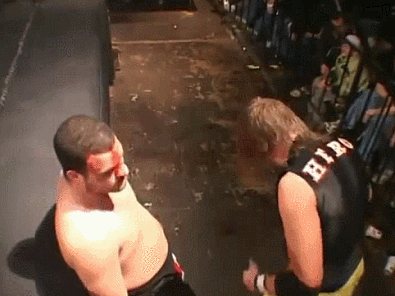Commissions continue again, this one coming from friend of the program Eamonn. You can be like them and pay me to write about all types of stuff. People tend to choose wrestling matches, but very little is entirely off the table, so long as I haven’t written about it before (and please, come prepared with a date or show name or something if it isn’t obvious). You can commission a piece of writing of your choosing by heading on over to www.ko-fi.com/elhijodelsimon. The current rate is $5/match or thing or $10 for anything over an hour, and if you have some aim that cannot be figured out through simple multiplication, feel free to hit the DMs on Twitter or Ko-fi.
As with the last piece of this kind, also from Eamonn, I would like to just talk about some stuff that comes to mind during all of this, along with offering some kind of look at what’s in this wonderful wonderful compilation.
- The story begins in late 2005, when Alex Shelley, adrift in TNA’s X-Division (using a classic Dale Oliver rip off of his indie theme, “Six Barrel Shotgun” by the Black Rebel Motorcycle Club), began bringing a camcorder to the ring to work a neat little, and ahead of its time arguably, tape study film nerd gimmick.
- Before long, he would find himself employed as — get this — paparazzi for main event heels on the roster like, initially, Jeff Jarrett and the all-time goon stable Planet Jarrett (and later Father James Mitchell), resulting in one perfect image, capturing a perfect Double J outfit and a great stooge look from Shelley.
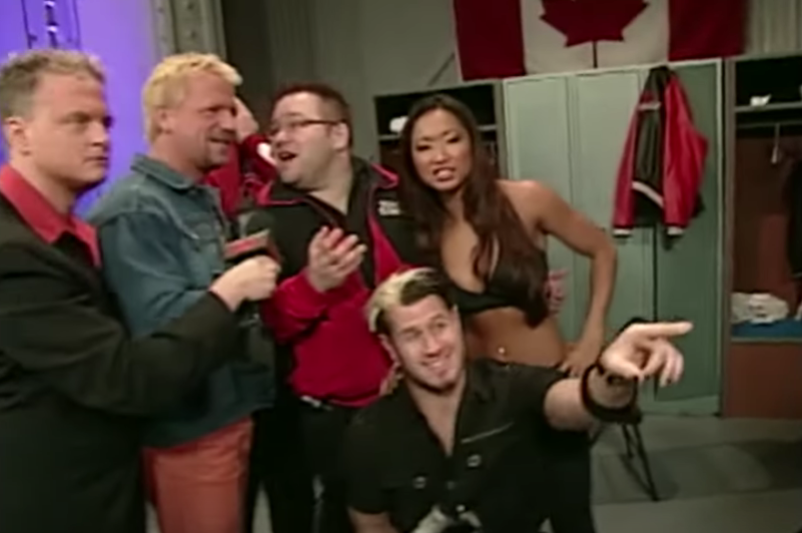
- After this weird little Jackie Gayda/Gail Kim/Jeff Jarett thing, something far more interesting happens, with Jeff employing Shelley to stalk Sting out in California to prove he’s really retired, since Eric Young won’t stop claiming Sting is back.
- Shelley referring to him as “Uncle Jeff”, also gold, alongside Sting as “Mr. Too Good For the Phone Book” (this suggests the greatest possible stooge heel bit, where Shelley tries to look up “Sting” or “Stinger, The” in the phone book).
- In the Sting stuff especially, Shelley immediately gets the concept of TNA Humor right, looking at Sting’s big house from far away, and breaking up the silence with, “I definitely want something like this when I move out of my apartment.)
- The story itself is one of TNA’s better ones, although hitting speed bumps in the middle as most do, with Jarrett being humiliated by Sting’s return and going so far to prove he’s actually retired when he says he is by sending Alex to do this and then, a week later, to get Sting on camera saying he’s quit, that it draws Sting out of an earnest retirement to kick his ass for violating his privacy like that, ensuring that he was in fact correct, but at great cost to himself. It helps also that it is one of the best babyfaces ever in Sting and a perfect coward heel in Jarrett, and that their eventual match rocked, but the Shelley part of the story is one of the highlights of the entire piece.
- Just as good is that, when presenting that final video, Shelley is a nervous wreck while everyone praises him, not having seen the video yet, eventually resulting in one of the great reaction shots ever.

- With this over, the story turns towards Shelley’s involvement in the also really good Christian Cage vs. Abyss NWA Title program in the spring of 2006, which has him in essentially the same role, but taken even further with a Father James Mitchell home invasion angle.
- Shelley is a little more out of place in a more serious thing, but his place as a little bit of a goof and stooge previously also REALLY helps get this over as some serious stuff the evil heels are doing wrong.
- It also sets up a GREAT angle where Abyss then attacks Christian at his home when he goes to get Shelley and Mitchell the next week, complete with almost drowning Christian in his own pool, only stopping because James Mitchell says he has to be alive for Abyss to win the title from him.
- While not in this compilation, as these are not about matches, there’s also a VERY fun Christian vs. Alex Shelley TV match as part of this, that I think not a lot of people know about, which you can see here.
- Anyways, the prelude is over, and now it’s time for the meat of this thing.
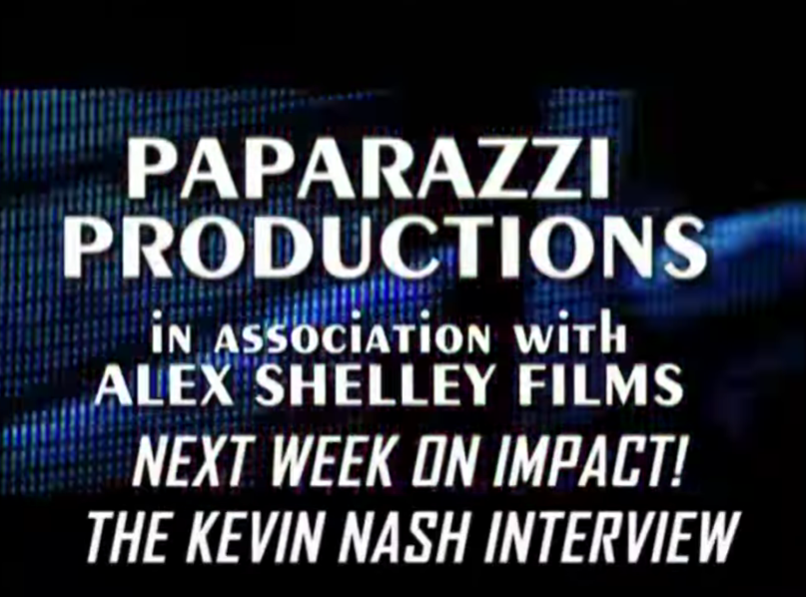
- These initial interviews are, genuinely, probably the TNA thing that I’ve watched the most in my life.
- Kevin Nash and Alex Shelley have an on-screen chemistry that cannot be just manufactured. I don’t know quite what it is, some things evade any sort of quantification or explanation and simply work, and the fact that Kevin Nash and a classic golden era ROH guy in Alex Shelley have it — arguably more then Nash had with anyone except Scott Hall himself — seems to fit that bill. They bounce off each other and tee each other up perfectly, and it’s all probably more than a little bit responsible for the revitalization of Kevin Nash’s image after this, making it harder and harder to hate him for WCW nonsense when he leans into it like he does going forward and constantly involves himself in TNA’s more comedic aspects.
- In these first pieces (which seem to be the regular version and not the director’s cuts you can find on Youtube, in another genius bit of TNA character work), there are a million perfect lines and bits, so, fuck it, here are some of them.
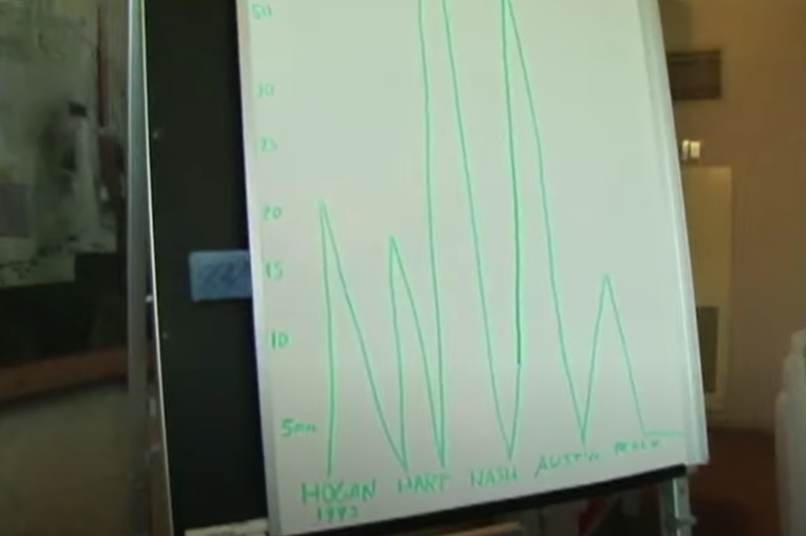
- Nash claims to be largest grossing champion ever in 1995.
- “Number one, always take credit for anything you can. You should have said, ‘I came up with that’.”
- “Madison Square Garden doesn’t hold 28,000…”, “It did that night.”, etc.
- A classic old 90s bit with Nash facing a little person under a mask in his X Division debut, highlighted by Don West yelling “HE’LL BE HERE ALL WEEK, TRY THE VEAL”.
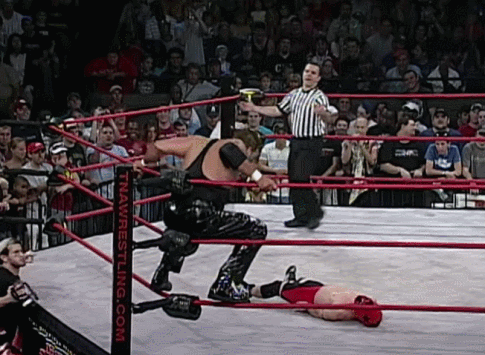
- Disappointingly, this doesn’t have even close to all of these bits, in a baffling choice (yes, it would have been worth it).
- SIMOLEAN JOE
- Madagascar’s greatest wrestler, alongside Super Blue Cross VI
- “I’ve never seen a two-sided ring before.”
- The training vignette with the Madagascar Pro Wrestling guys where Shelley tries to teach Nash advanced holds but all he does are sledges to the back is especially great.
- In between all of that, there’s a nice little angle with Nash wanting to ruin the X Division so TNA stops ignoring him after refusing to bring him back after injury, trying to drive up his price before his deal runs out the following October, all capped in beautiful Kevin Nash fashion by building up the Nash/Sabin rematch in which Sabin is supposed to win, only for Nash to be hurt, and Sabin only beat Shelley to end the feud. At the end of a feud all about Nash leaning into the perception of him and joking around with it, it’s almost too perfect.
- Kevin Nash then returns, months later, to hold a press conference from a dive bar announcing a gauntlet battle royal for Bound For Glory
- Some of the names Nash and Shelley claim might be in it: Bob Newhart, Cecil Fielder (Shelley says this one and Nash just completely breaks on camera), Tom Zenk, Erik Watts, Carol Burnett, Foreigner, and all the living members of ABBA.
- Disappointingly, total loser gimmick Austin Starr will win it.

- The PCS is a multi-month challenge featuring Shelley, Starr, Jay Lethal. Sonjay Dutt, and Senshi, and although more obvious than the initial Shelley/Nash work, it produces a million great bits in its own right, at a higher clip.
- Nash stirring a jar of piss like coffee
- The Rorschach test in general, not only featuring Shelley saying one blot is “my heart, after you broke it”, but Nash following Senshi (Low Ki) answering “WARRIOR” to every one by asking if he really sees Jim Hellwig in all of these.
- “So Jay, have you ever actually administered a lethal injection?”
- Nash repeatedly accusing Sonjay Dutt of being on steroids
- THE BOB BACKLUND SYSTEM
- Everyone humming to “Push It” during a push up contest, and Shelley singing “push up REAL GOOD”.
- “Wouldn’t it be an inspirational story if someone with chlamydia won this event?”
- Kevin Nash encouraging everyone to kiss the winner, but only after events Lethal wins.
- Everyone singing the ADRENALINE RUSH ADRENALINE RUSH song for musical chairs.
- TNA Legend Bob Backlund serves as the judge for the finals between Starr and Shelley, which Shelley wins to achieve the greatest prize in his career, leading to the dream of Backlund putting Starr in the Crossface Chickenwing.
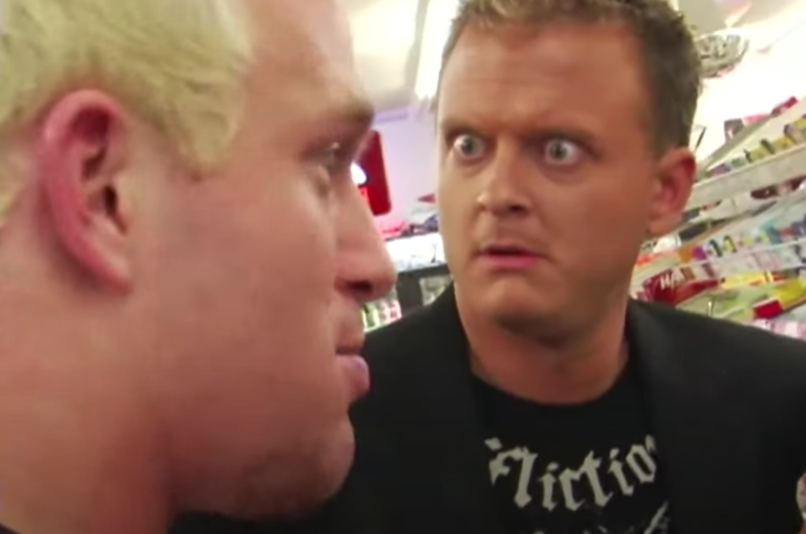
- WAY MORE IMPORTANTLY, we shift to Shelley filming JB and Eric Young buying condoms for Eric (after Shelley said not to get chlamydia like him), leading to one of my favorite TNA line reads ever when James Storm and others also come in the convenience store.
- “ERIC YOUNG, BUYING RUBBERS!”
- “Two guys, buying rubbers, four o’clock in the morning. Have a great night.”
- Eric also gets Cheese Nips.
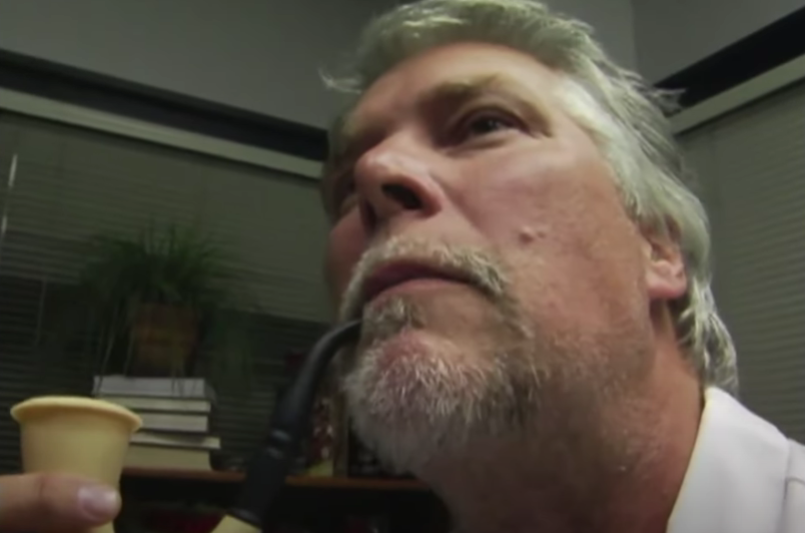
- Kevin Nash, PhD, then treats Lethal and Dutt for Dysfunctional Wrestler Syndrome.
- This whole thing, Paparazzi Idol, is where the wheels begin to fall off.
- Black Machismo, and what not.

- Nash reassures Sonjay about Oz by saying he worked two matches in a year with this gimmick and made six figures.
- The Guru Sonjay Dutt is also very bad.
- They close on a high note with a old vs. new debate between Bob Backlund & Jerry Lynn and the MCMG. The writing for this is bad and it is classic Russo style short and cramped, but Bob going insane with the chickenwings is impossible not to get SOMETHING out of.
- The last line here is a great little bonus, beginning Kurt Angle’s search for backup, which will eventually lead to the also great Kevin Nash as backstage counselor bit for a few months.
It is not all perfect, you can really chart the creative decline (relatively) of TNA from 2006 to 2007 through this compilation as the bits become increasingly labored from late 2006 on, but I’m so happy that something like this exists, because all in all — especially the initial Nash/Shelley work — this is some of the best work TNA’s ever done, the sort of thing that justifies a company’s entire existence if nothing else would, as well as being some of the finest pro wrestling bullshit of all time.

